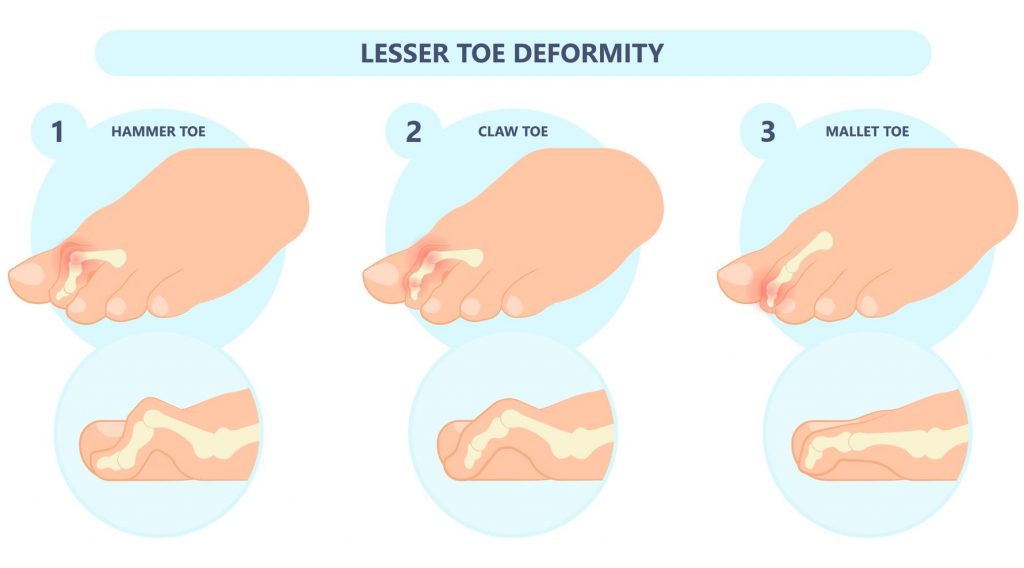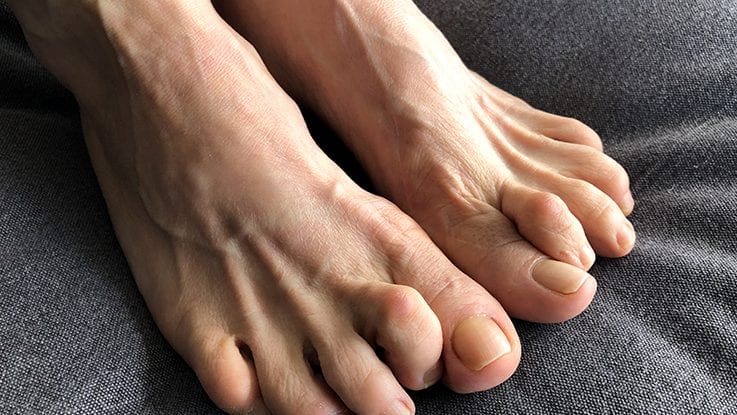Conditions >>
Clawed toes and hammer toes are toe deformities that can cause foot pain or other foot conditions. They often occur when there is a muscular imbalance in the foot, causing the toe to remain in a bent position. Clawed and hammer toes can be flexible (able to straighten) or fixed deformity (unable to straighten).
Clawed toes appear as toes that curl downwards like a “claw”, characterized by hyperextension of the metatarsophalangeal joint (MTPJ) and flexion of the proximal interphalangeal joint (PIPJ) and distal interphalangeal joint (DIPJ).
Hammer toes differ from clawed toes slightly where only the middle part of the toe is curled, and are characterized by hyperextension of the MTPJ, flexion of the PIPJ and extension of the DIPJ. There is a third type of toe deformity known as mallet toe, where only the tip of the toe is curled downwards.

The primary cause of clawed and hammer toes is muscular imbalance. There are tendons attached to the top (extensor tendons) and bottom (flexor tendons) of our toe bones and are responsible for bending our toes upwards (extension) and downwards (flexion). Both extensor and flexor tendons work in balance to stabilise our toe in a straightened position.
Various risk factors such as tendon tightness, and abnormal foot posture can disrupt the stability between extensors and flexors, causing one to overpower the other, resulting in clawed or hammer toes.
Risk factors of clawed and hammer toes include:

Conditions that can be caused by clawed and hammer toes include:
Management for clawed and hammer toes largely depends on whether the deformity is fixed or flexible. For fixed deformities, the aim of management is to reduce pressure at the tip of the toes and ball of the foot. For flexible deformities, management is aimed at straightening the toes when one is weight-bearing.
Management options for clawed and hammer toes include: